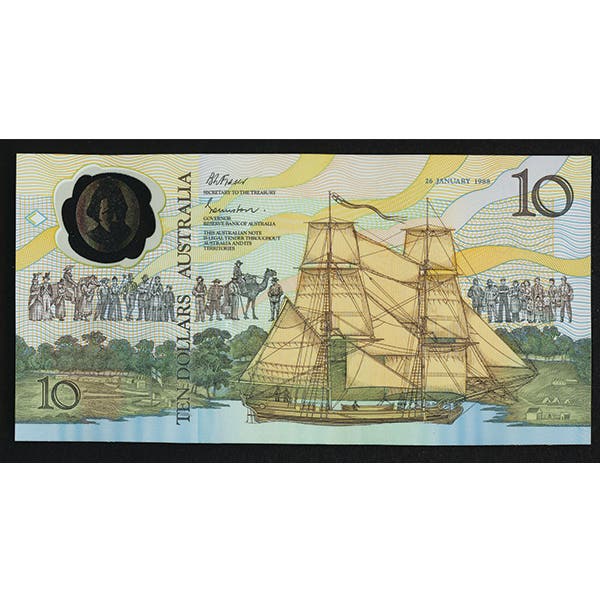Why I Collect West Virginia Scrip
By Billy Campbell When I first started collecting coal scrip about 16 years ago I knew nothing about scrip. We were passing through Beckley, W.Va., on our way to the…
By Billy Campbell
When I first started collecting coal scrip about 16 years ago I knew nothing about scrip. We were passing through Beckley, W.Va., on our way to the world-famous Greenbrier Hotel.
There was an attraction we wanted to visit, Beckley exposition coal mine. They had a ticket office to visit a coal mine and a store. I noticed a container in the store of what appeared to be coins, which I have a small collection of circulated U. S. coins, upon inspection I had never seen anything exactly like the coins in that container but these were called scrip and the denominations were one cent to the dollar.
Each coal company that used scrip had their name on the obverse, some minted as few as only 100 of each denomination to as many as thousands of each. These were some of the most common pieces and were selling for only a dollar each I think. Now, some scrip sells for hundreds of dollars and I personally know of some selling for over $1,000 each. They were just so unusual and interesting that I bought quite a few of them and picked up some information as to what they were.
Information about scrip was very scarce for me to find. I did find out about the National Scrip Collectors Association and joined that organization and a new world of collecting opened. NSCA holds two meetings (spring and fall) where sellers and collectors meet each year. NSCA also has a two-volume catalog that identifies all known scrip and their rarity ratings.
Looking back, West Virginia seems to me to have been the best scrip to collect because of the excitement of the history that just keeps turning up. Not only that, but it turned out there were more coal scrip and related coal store scrip minted and used in W.Va., than almost in all the rest of the United States coal scrip combined. Every coal connected person, mine, store, and town has a personality and story, you just have to find it. It’s history that will soon be lost forever unless it’s documented and the coal scrip collector is a vital part of saving that history for future generations. Without the abundance of coal, America would have never had the industrial revolution it had.
That brings to life another story that has been largely forgotten, the coal miner and his family without which coal could have never been harvested. The hardships of the miners and their families in coal-built towns and abuses are many and should never be forgotten. Many books and articles have been written on this issue and scrip has a part to play in keeping the past alive in the future. Heartbreaking stories abound. In my real life, business information and details were very important to have success, I’ve carried that need for information over into my hobby. I have many original records of W.Va. historical scrip minting and correspondence that I use when researching scrip and I’m constantly in search of more records.
The use of coal scrip largely began about 1900 and stopped in the mid-1950s although very few coal companies still used it in the 1960s I’ve seen. The U. S. mint produces coins in mintages meant to be saved by thousands of collectors, most of those coins will never reach circulation.
Coal scrip, on the other hand, was never meant to be saved nor I doubt if anyone could or have wanted to save it. Anyone who drew scrip really needed its buying power right away and if they had any scrip left, I’m sure they would turn it in for U.S. currency as soon as they could, which would be the next payday. Some surviving scrip is very rare as the scrip rarity ratings show, there are over 1,000 pieces of W.Va. scrip with a rarity of R-10 which means only four or less are known, but the ratings are the best estimate and have not yet been verified by all West Virginia collectors reporting at the same time.
As a matter of fact, most Americans use a form of scrip today (credit cards) and pay about the same rates if they don’t pay off their card statements. Most of the records I have were costly in acquiring and costly in time of preparation to view and use them in an orderly manner. The records will be released to collectors in some form for the benefit of the National Scrip Collectors Association in the very near future. All West Virginia collectors can enhance their knowledge and personal collection by having all or some of the records. The records I have were gleaned and saved by the first generation of collectors who it appears were mostly oriented to West Virginia scrip. eBay under the heading of coal tokens always have several hundred pieces selling and Numismatic News even has a token ad.
This “Viewpoint” was written by Billy Campbell, a collector of W.Va. scrip. To have your opinion considered for Viewpoint, write to Editor, Numismatic News, 5225 Joerns Drive, Stevens Point WI, 54481. Email submissions can be sent to numismatics@aimmedia.com.









